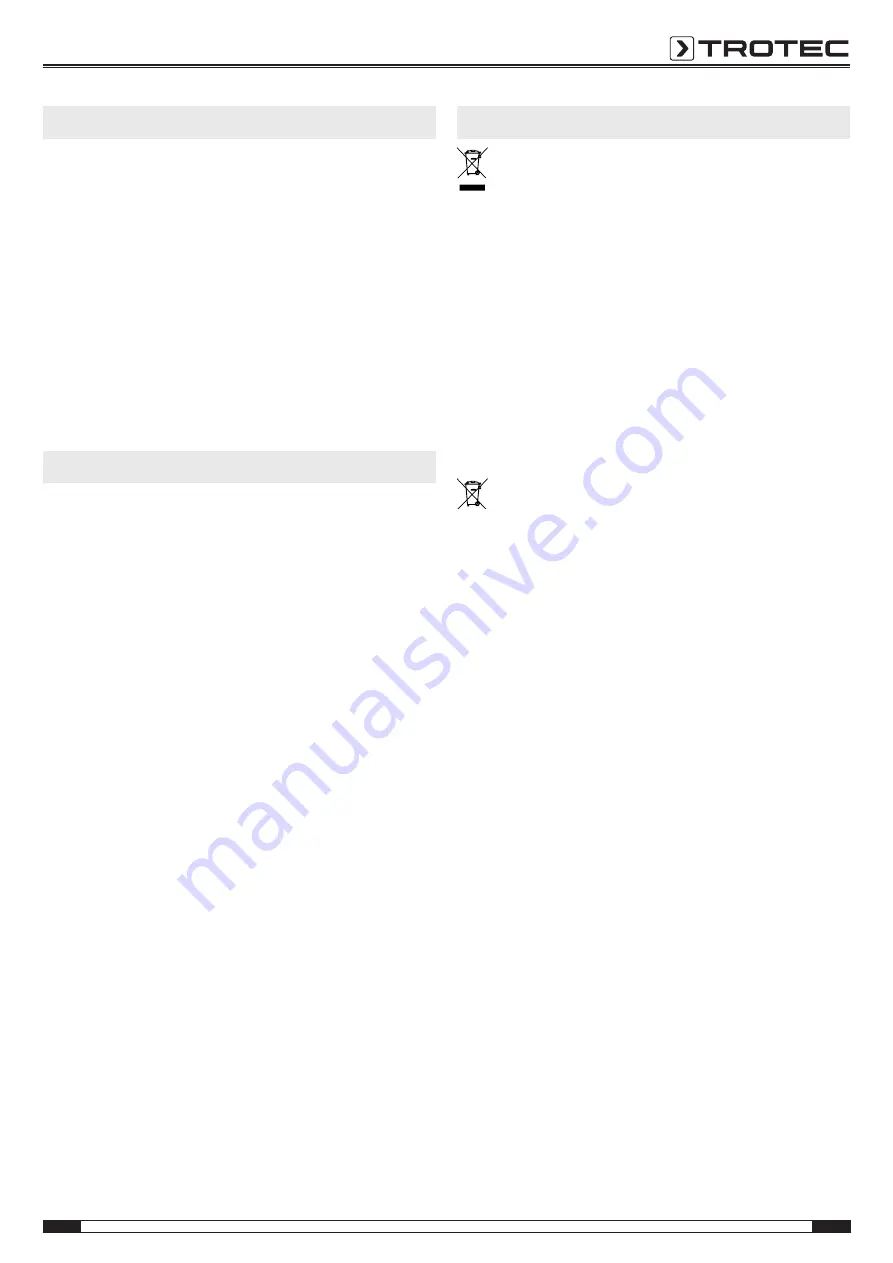
EN
9
cross line laser BD7A
Maintenance and repair
Charging the battery
The battery should be charged prior to initial start-up and when
the battery is low. To do so, please follow the instructions in the
chapter Operation.
Cleaning
Clean the device with a soft, damp and lint-free cloth. Make
sure that no moisture enters the housing. Do not use any
sprays, solvents, alcohol-based cleaning agents or abrasive
cleaners, but only clean water to moisten the cloth.
Repair
Do not modify the device or install any spare parts. For repairs
or device testing, contact the manufacturer.
Errors and faults
The device has been checked for proper functioning several
times during production. If malfunctions occur nonetheless,
check the device according to the following list.
Self-levelling is not possible:
1. Check whether the lock switch (7) is released and the laser
can move freely. If the laser is not able to move back and
forth freely within the 3° angle despite the lock switch
being released, please contact the customer service.
2. Check the surface on which the device is placed.
If necessary, remove coarse dirt.
Laser lines are not properly horizontal/vertical:
•
Check the laser for freedom of movement in self-levelling
mode. If the laser is not able to move back and forth freely
within the 3° angle despite the lock switch being released,
please contact the customer service.
Horizontal laser lines are partially interrupted:
•
The lateral struts of the protective cover accommodating
the laser cause interruptions in the horizontal 360° laser
line at defined points. This cannot be avoided. Should you
detect interruptions at other points, please check the glass
covers of the protective cover for scratches or dirt, which
may be the cause of the laser beam interruptions. Remove
external dirt with a damp cloth. Do not use any aggressive
cleaning agents (see chapter Cleaning)! If you detect dirt
underneath the glass covers or scratches, please contact
the customer service.
Laser is weak:
•
Check the battery status and recharge the battery if
necessary.
Disposal
The icon with the crossed-out waste bin on waste
electrical or electronic equipment stipulates that this equipment
must not be disposed of with the household waste at the end of
its life. You will find collection points for free return of waste
electrical and electronic equipment in your vicinity. The
addresses can be obtained from your municipality or local
administration. For further return options provided by us please
refer to our website www.trotec24.com.
The separate collection of waste electrical and electronic
equipment aims to enable the re-use, recycling and other forms
of recovery of waste equipment as well as to prevent negative
effects for the environment and human health caused by the
disposal of hazardous substances potentially contained in the
equipment.
Li-Ion
In the European Union, batteries and accumulators must not be
treated as domestic waste, but must be disposed of
professionally in accordance with Directive 2006/66/EC of the
European Parliament and of the Council of 6 September 2006
on batteries and accumulators. Please dispose of batteries and
accumulators according to the relevant legal requirements.
























